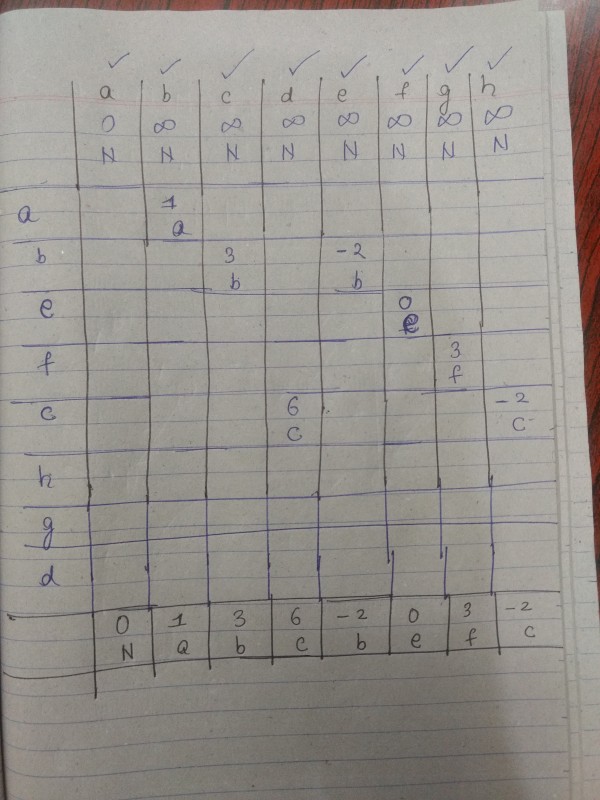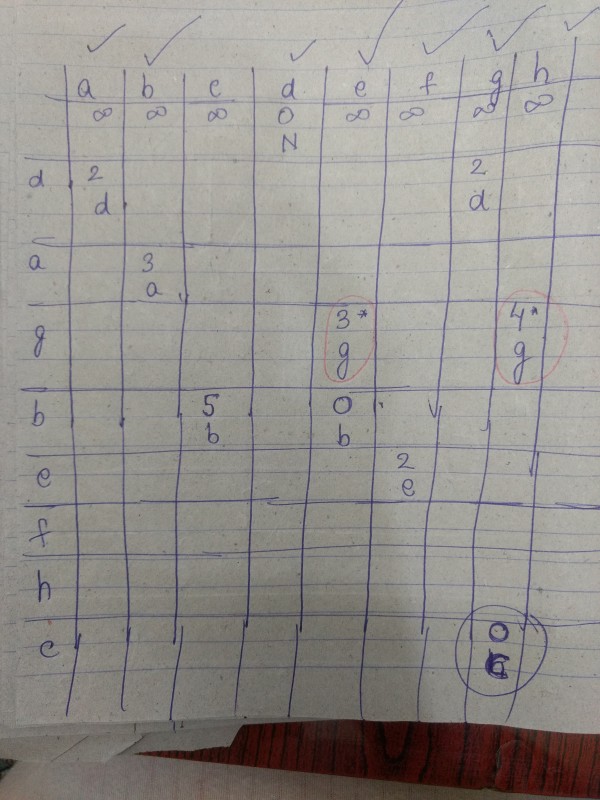Once, we know the proof of correctness of Dijkstra algorithm, it is easier to trace down why this works fine for source vertex A and not for Source Vertex D.

So, above is a snip from cormen, where Set S indicated the set of vertices for which shortest path from source vertex "s" have been determined and for $\forall v \in S$ we have $v.d=s(s,v)$ means in simple words the cost to reach every vertex in Set S, from source vertex "s" is correctly determined and they are valid under all circumstances.
Now, this proof says when suppose a new vertex say "y" is added to set S, after this is done, $y.d=s(s,y)$ holds. Means my algorithm has correctly computed the cost to reach vertex y from s.(Keep this point in mind and you'll be able to figure out where is what going wrong!!)
Okay So now my source vertex is A.
At each step, I need to make sure that when vertex 'v' is added to set S, means it's shortest distance from source has been calculated, it must be really minimum and you should be able to verify it from the graph as well.
So, below is how the algorithm works

(1)First I start with source vertex A and relax vertex B with cost as 1. is this correct? Yes, we can see from the graph that the best cost to reach vertex b is from a with cost 1.
(2)Then I process vertex b, and it is now included in S as it's shortest path from source is determined. Now I relax all edges leaving B,and set path cost of C as 3, and path cost to e as -2. Are they correct? Is it really that to reach e from A I would have minimum cost of -2? Yes from graph it seems so.Similar is story for vertex C.
Since, the cost to reach b from source vertex a was correctly computed and found minimum, all vertices, which are reachable from vertex b also should have been correctly computed minimum cost from source vertex a.
(3)Now, e is included in set S and I relax edge to vertex f and cost comes to be 0. Is it correct? yes from the graph I can manually find that it is correct.
So you notice? At each step, we have to check that when a vertex v is included in set S, the distance to reach this vertex v from source vertex s must have been correctly determined in order for Dijkstra to work correctly.
Now Consider the scenario when source vertex is D and the algorithm is executed.

Now, consider the scenario, when vertex g was included in set S and all edges from g were relaxed.
cost to e from d changed to 3
cost to h from d changed to 4.
And both are wrong, if you see the graph.
The actual cost to reach vertex e from d (minimum) is 0 (d-a-b-e)
And to h also the correct minimum cost is 0 (d-a-b-c-h)
So, from this point onwards the trouble started.
And as you can see, vertex h is processed before vertex c and since h is processed, this means it is included in set S which means you have correctly computed the shortest path cost to reach h from d which is wrong!!. You see the fun part is, till the point finally when h is included in set S (vertices whose shortest path cost from source vertex have been determined), no one changed cost of h to correct value 0 and it got included in S with wrong cost!!.
Obviously, vertex g is responsible for this, and if C was processed before g, this could have been prevented!!.
In order to h have correct minimum path cost from d, it must have been processed after vertex C, because the minimum cost to reach C from d is 5 and then to h it would have been 0 and this is correct!!.
So here answer is (D)